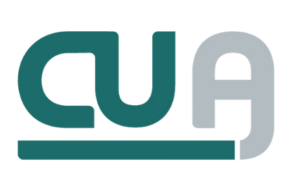Leveraging Technology to Protect Your Small Business During the COVID-19 Crisis—and Beyond

Whether it’s the cool craft brew pub on the corner or the hottest new app, it’s clear that Americans love the excitement, risk, and reward of creating the next big thing in a small package. What also is clear: the US economy loves small and medium-sized businesses because their innovations propel economic resilience, allow us to compete more successfully overseas, and create opportunities for diverse and inclusive business ownership. While many assume huge multinational corporations motor the marketplace, the truth is local SMBs do.
Until very recently, SMBs comprised 99.9 percent of businesses and 47.5 percent of private sector employment in the US. Sadly, SMBs have taken a tremendous hit in 2020, with the COVID-19 outbreak presenting unexpected obstacles to their success and survival. How SMB owners and C-suite leaders have deployed technology is turning out to be a major factor in how, or if, their company will survive those challenges.
Like large companies, SMBs have become dependent on technologies to support critical functions such as marketing, sales, manufacturing, and customer experience, in addition to traditional back office. Those SMBs that have managed their technology with oversight and efficiency are realizing opportunities for competitive advantage. Of those that haven’t, many are struggling to overcome the effects of technical debt—specifically, what I call “Tech Debt 2.0®.”
The concept of technical debt has been around for nearly three decades. Howard G. “Ward” Cunningham, a programmer known for developing the first wiki, is credited with coining the term. “Shipping first-time code is like going into debt,” according to Cunningham. “Every minute spent on not-quite-right code counts as interest on that debt.” In other words, a little debt speeds development, as long as it is paid back promptly with a rewrite. This description makes the trade-off clear: Speedier development time and the ability to rush to market is leveraged against future work to improve and support the first version’s imperfections. The “interest” is a stand-in for future development costs, increased support headaches, and potential hits on credibility.
In my book Tech Debt 2.0®, I compare the concept of technical debt to financial debt. One way in which the analogy doesn’t work quite as neatly is that financial debt is typically owed to someone else, usually a bank, credit union, or rich uncle. Tech Debt 2.0, however, is something your small business owes to itself.
Similar to the original definition, Tech Debt 2.0 refers to an imperfection in the state of technology that a business should rectify in the near future, causing interest to accrue that is either financial or non-financial in nature. But, the definition is not simply limited to software development—because the problem isn’t simple at all.
For example, Tech Debt 2.0 can be attributed to the version of software and operating systems, the level of security capabilities employed on systems, the age of networking equipment in the data center, or the compatibility of existing solutions with new, cutting edge technologies. If you know where to look, the effects of Tech Debt 2.0 can also be found in data quality, business processes, and even among IT talent. The effects can be compared to accrued interest and directly impact, or irrevocably threaten, the bottom line.
Tech Debt 2.0 can translate into excessive costs for businesses, whether from rectifying security breaches, recouping lost revenue, or increasing expenditures. It also comes with a significant non-financial price tag. Tech Debt 2.0 can drive down employee morale, inhibit the recruitment and retention of good talent, and negatively affect the merger and acquisition process. And, it can have disastrous effects on a company’s reputation.
SMBs may not recognize IT as the key strategic asset it is, and, therefore, may wind up underutilizing IT for competitive advantage. Another distinct challenge for SMBs is their ability to minimize the impact of Tech Debt 2.0. The challenges of proactively managing their company’s technology investments are aggravated as SMB leaders confront the challenges of COVID-19.
The first step for leaders is getting a firm grasp of tech debt, the intersection of technology and economics, and how to recognize the different types: unplanned, creeping, and intentional. With an understanding of tech debt, SMB leaders can then take steps to avoid it, eliminate, or use it to their advantage. In Tech Debt 2.0®, I offer SMB leaders a tool to measure their company’s tech debt to help guide the future direction of their business.
Every SMB leader has an opportunity to positively impact their organization during this time of crisis and throughout the uncertainty ahead. Following are offensive and defensive actions you can take today:
On Offense:
- Do a health check of your project portfolio and reprioritize backlog.
- Refocus IT governance to accelerate decision-making and maintain alignment.
- Develop an “acute” action plan with intent and purpose for the next 30, 60, 90, and 180 days.
- Prioritize actions that focus on revenue preservation and customer experience.
On Defense:
- Diagnose your tech debt and plan to address root causes.
- Conduct a business impact analysis to prioritize your cyber risks.
- Review and revise essential “pandemic” security policies and practices.
- Engage your team and external partners to identify cost-saving opportunities.
- Protect core operations and monitor critical infrastructure services of internal users.
Above all, stay healthy and stay positive—for the sake of your family as well as your business.
[This article was originally published on ceoworld.biz.]


